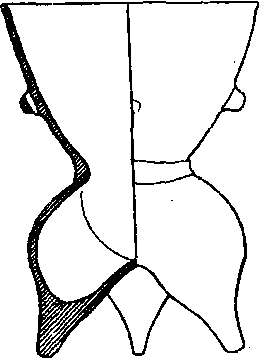陶甗
沈阳新乐遗址上层出土。通高45、口径35厘米,火度较高,夹砂红陶,略呈黄白色,敞口深腹,唇外侈,束腰。其上部为盆状,腹壁外饰一对桥状耳与一对瘤状耳。腰部附加一周扁平状素面泥条。下部为鬲足状,呈椭圆形乳袋体,底部足尖为实体,作蒸煮食物的烹饪炊具。现藏于沈阳新乐遗址博物馆。参见 “新乐遗址”、“新乐文化”。

陶甗
| 词条 | 陶甗 |
| 类别 | 中文百科知识 |
| 释义 | 陶甗沈阳新乐遗址上层出土。通高45、口径35厘米,火度较高,夹砂红陶,略呈黄白色,敞口深腹,唇外侈,束腰。其上部为盆状,腹壁外饰一对桥状耳与一对瘤状耳。腰部附加一周扁平状素面泥条。下部为鬲足状,呈椭圆形乳袋体,底部足尖为实体,作蒸煮食物的烹饪炊具。现藏于沈阳新乐遗址博物馆。参见 “新乐遗址”、“新乐文化”。
陶甗 |
| 随便看 |
开放百科全书收录579518条英语、德语、日语等多语种百科知识,基本涵盖了大多数领域的百科知识,是一部内容自由、开放的电子版国际百科全书。